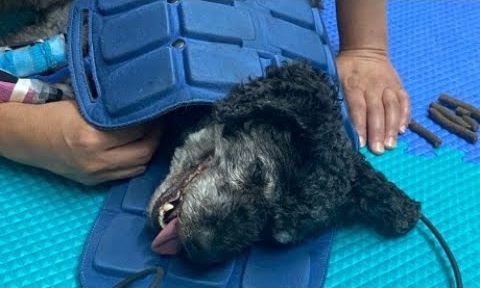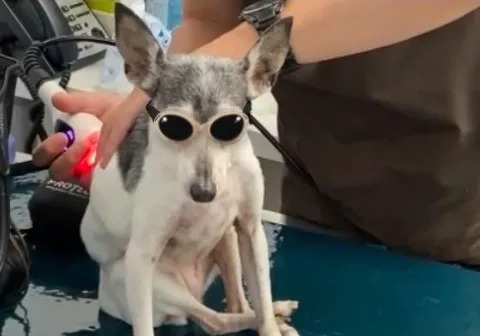July 4th poses an increased risk of injury, anxiety, and illness for pets, particularly dogs. Veterinary professionals are in a unique position to prepare pet owners to mitigate these risks through early intervention, education, and medical support.
Data Snapshot: Why It Matters
- According to Nationwide Pet Insurance, veterinary claims increase by 30–50% after July 4th.
- July 5th is one of the busiest days of the year for animal shelters due to a spike in runaway pets (Nationwide Pet Insurance).
- Trupanion reports a 297% increase in claims related to heatstroke or hyperthermia during the summer months.
Preparing Your Clinic for Post-July 4th Surges
Following July 4th, veterinary clinics frequently experience a sharp increase in cases related to trauma, anxiety, ingestion, and heat-related illness. Proactive planning ensures smoother triage, minimizes staff burnout, and improves patient outcomes during this seasonal surge.
Action Steps for Veterinary Teams:
Review Staffing & Schedule Flexibility:
Anticipate an influx of urgent cases on July 5th and the following weekend. Ensure sufficient DVM and technician coverage, especially during walk-in or urgent care hours.- Prepare Emergency Protocols:
Revisit protocols for triaging heatstroke, toxin ingestion, and acute injuries. Ensure staff are trained and supplies are stocked and accessible. - Client Communication & Reminders (Pre-Holiday):
Leading up to the holiday, use social media, newsletters, or SMS/email reminders to:- Refill anxiety medications in advance.
- Schedule wellness visits or microchip checks before the holiday rush.
- Stock Commonly Used Medications & Supplies
- Create Quick Reference Tools for Front Desk & Techs:
Develop or print cheat sheets with poison control hotlines, triage criteria, and client-facing discharge instructions for common July 4th incidents (heatstroke, noise phobia, ingestion). - Debrief Post-Holiday:
After the surge, hold a brief staff meeting to review what went well and identify areas for improvement. Consider it an annual learning opportunity to better prepare for next year.
Prepare Patients for Fireworks-Induced Anxiety
Loud, unpredictable fireworks can trigger panic, destructive behaviors, or escape attempts in dogs.
Action Steps to Discuss with Clients:
- Recommend secure indoor confinement in a quiet, darkened space.
- Suggest noise-masking strategies (white noise, calming music, or TV).
- Discuss behavioral therapies and pharmacologic options for patients with known noise sensitivity.
Escape & Lost Dogs
Fearful dogs often bolt, leading to injuries or being lost. Animal shelters report major surges on July 5th.
Action Steps:
- Verify microchip placement and registration.
- Remind clients to use up-to-date ID tags.
- Educate about the importance of supervising pets outdoors during firework hours.
- Discuss home security basics: checking fences, gates, and screen doors.
Heatstroke & Dehydration
Trupanion data shows a 297% increase in heatstroke claims during summer July is the peak.
Early Signs to Discuss with Clients:
- Excessive panting, drooling
- Weakness or collapse
- Vomiting or disorientation
- Bright red or pale gums
First Aid Advice for Clients:
- Remove pet from heat, ideally put indoors
- Offer small amounts of water.
- Seek immediate veterinary care.
Preventive Advice:
- Move pet to a shaded, cool area.
- Avoid walks or play during peak heat hours.
- Provide constant access to water and shade.
- Never leave pets in parked cars or on hot pavement.
Toxic Foods & Alcohol
Barbecues increase pet access to toxic and harmful foods, including chocolate, grapes, onions, xylitol, alcohol, bones, and fatty leftovers.
Key Client Talking Points:
- Keep all food and drinks well out of reach of pets.
- Ask guests not to feed pets.
- Watch for signs of ingestion: vomiting, diarrhea, tremors, lethargy.
Advice to Clients if Exposure Occurs:
- Call the vet or an animal poison control hotline immediately.
- Provide specifics: food type, quantity, and time of ingestion.
- Do not induce vomiting without veterinary direction.
Decorations & Party Hazards
Ingestion or entanglement with party supplies (glow sticks, sparklers, plastic utensils) may result in gastrointestinal obstruction, choking, or chemical burns.
Veterinary Talking Points:
- Warn about the risks of small, chewable party items.
- Encourage supervision and timely cleanup after events.
- Instruct clients to watch for GI symptoms post-ingestion: vomiting, anorexia, straining, or bloated abdomen.
- Review diagnostic and surgical treatment options as needed.
Managing Suspected Toxic Ingestion in Companion Animals:
- Advise clients to contact your practice or the nearest veterinary emergency facility immediately. Rapid assessment is critical, particularly in cases involving potential gastrointestinal obstruction, neurotoxins, or corrosive materials.
- Instruct clients to retain any packaging or remaining material. This information can be invaluable for identifying toxic compounds and determining the appropriate treatment protocol, including consultation with a toxicologist if needed.
- For glow stick or luminescent product ingestion: Recommend clients gently wipe the oral cavity with a damp cloth to reduce residual irritation and prevent continued ingestion. Advise withholding food or water until veterinary evaluation, unless directed otherwise.
- Provide clients with access to poison control resources for after-hours guidance:
- ASPCA Animal Poison Control Center: 888-426-4435
- Pet Poison Helpline: 855-764-7661



